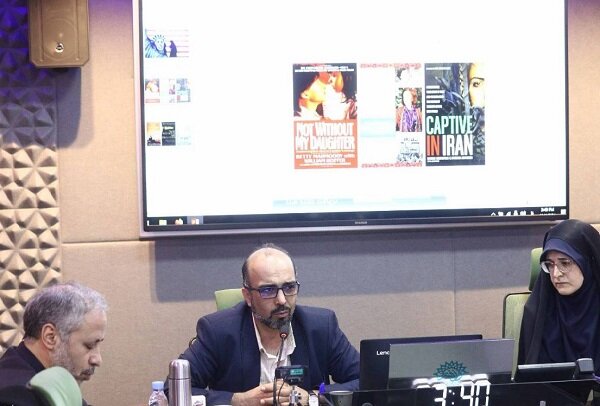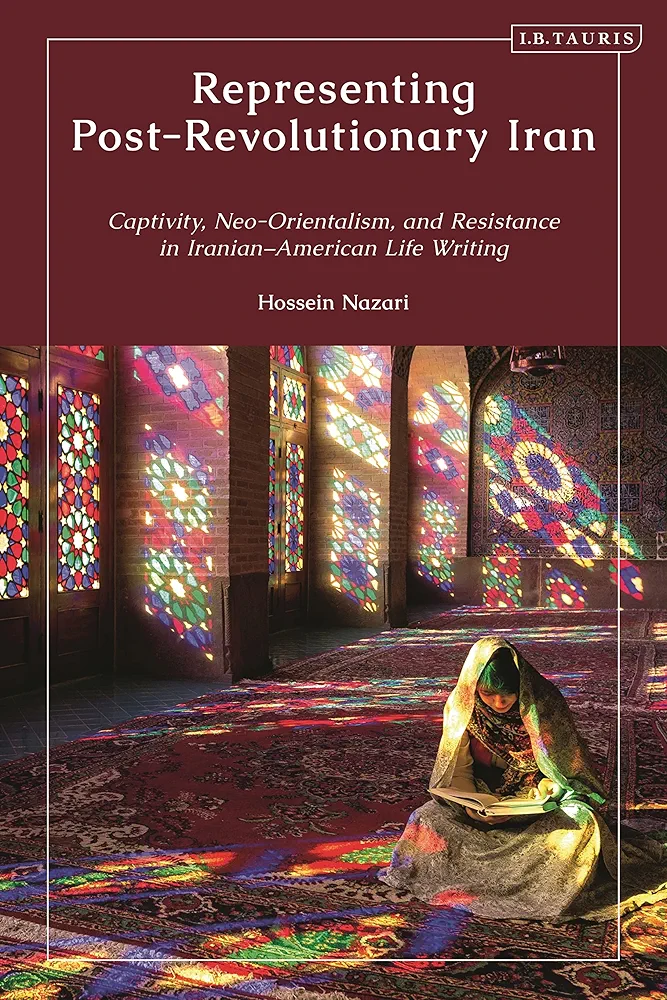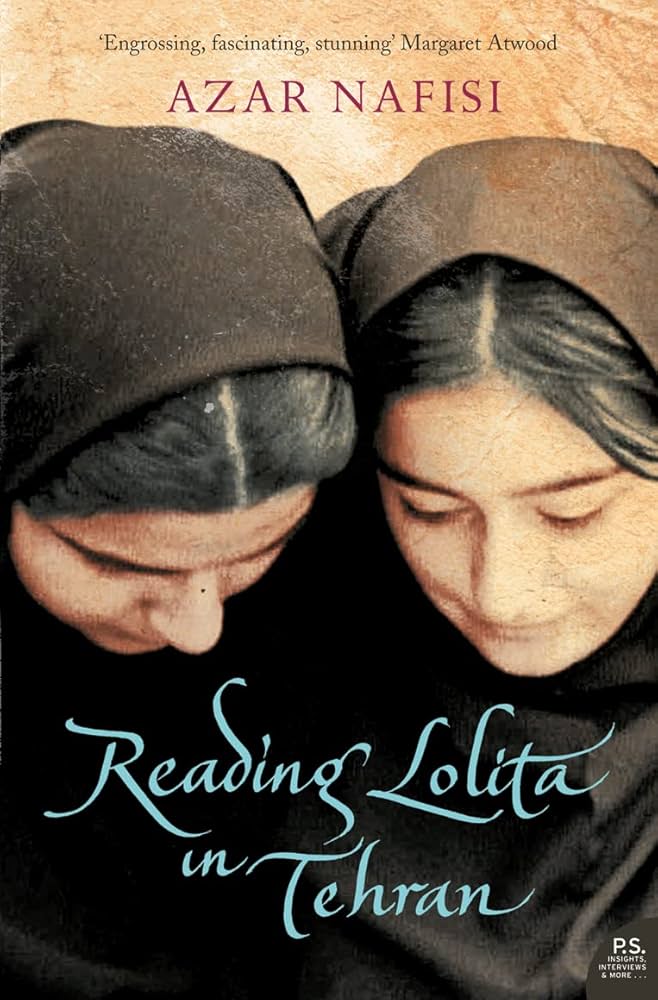A recent discussion at a literary gathering revealed that the portrayal of Iranian women in the book “Not Without My Daughter” bears no resemblance to the reality of Iranian women.
The Distorted Image of Iranian Women in “Not Without My Daughter”
Hussain Nazari argued that Betty Mahmoody’s book, “Not Without My Daughter,” presents an image of Iranian women that is entirely disconnected from the actual experiences of women in post-revolutionary Iran. He further contended that this book has significantly contributed to the spread of Iranophobia.

A Critique of Western Perceptions of Iran
As reported by Jahanbanou from Mehr News Agency, the 30th session of the Sustainable Literature Think Tank, titled “A Critique of the Post-Revolutionary Iranian Image in Western Literature,” was held with the participation of Hussain Nazari, a researcher and faculty member at the Faculty of Foreign Languages at the University of Tehran.
The discussions in this session were based on Nazari’s research for his book, “Representing Post-Revolutionary Iran (Captivity, Neo-Orientalism, and Resistance in Iranian-American Life Writing).”

The Impact of Orientalism on Western Perceptions of Iran
At the beginning of the session, Nazari, referring to the unrealistic and illogical perceptions of many Western people regarding Iran, its geography, culture, and society, asked: “What is the root of such perceptions, and why do Westerners have such a view of us?” He suggested that the answer to this question can be found in Edward Said‘s theory of Orientalism, which examines the Western view of the East throughout history from a political perspective.
He added, “Over the past two decades, the West has portrayed itself as a world of freedom, progress, knowledge, and reason, while portraying the East, particularly the Middle East and Muslims, as a cradle of barbarism, ignorance, anti-woman, anti-culture, backwardness, superstition, and savagery. This perception is so deeply ingrained in Western audiences that even when they see the reality with their own eyes, it is difficult for them to accept. For example, Hollywood has been portraying Muslims as terrorists for fifty years, and even when they see Muslims who do not have such characteristics or behaviors, this image does not disappear from their minds.”
Narratives of Captivity, Post-9/11, and Resistance
Nazari continued, “In my research on this perspective, I couldn’t find any specific works written about Iran before the revolution. In fact, pre-revolutionary Iran was not a significant focus in Western literature. I will point to three main trends in the representation of post-revolutionary Iran by examining and analyzing three books: ‘Not Without My Daughter’ (by Betty Mahmoody), ‘Reading Lolita in Tehran’ (by Azar Nafisi), and ‘Jasmine and Stars: Beyond Reading Lolita in Tehran’ (by Fatemeh Keshavarz). These three main trends are narratives of captivity, post-9/11 narratives, and narratives of resistance.”
The Illusion of Captivity
Nazari continued, “Narratives of captivity are stories of Western women trapped in Iran and in the clutches of Iranian men. This captivity is both real and metaphorical. The word ‘captivity’ or its concept is often used in the titles of these books; for example, ‘Captive in Iran,’ ‘Not Without My Daughter.’

“Not Without My Daughter”: A Catalyst for Iranophobia
Betty Mahmoody, in her book ‘Not Without My Daughter,’ presents an image of Iranian women that has no connection to the reality of women in post-revolutionary Iran. In this book, hijab is associated with conservatism and violence and induces fear. The book employs the strategy of animalization to portray the other; for example, it says Iranians don’t eat food, they attack it like wolves. This book lacks any literary value and only has controversial content, yet no work has been as effective as this book in promoting Iranophobia. This book has been translated into more than 20 languages and has won the American Freedom Award.
In 1992, it became the best-selling book of the year in three continents, with twelve million copies sold, and its author was awarded an honorary doctorate from the University of Michigan and the title of Bravest Woman of the Year, turning her into a celebrity and millionaire overnight.”
This researcher said, “The factors that influenced the acceptance of a work like ‘Not Without My Daughter’ by Western audiences, with so much exaggeration, violence, and contradiction, can be: 1. The literary tradition of narratives of captivity (white women); 2. The seizure of the US embassy in Iran; and 3. Captivity as a spiritual journey.
The Enduring Legacy of False Narratives
After entering US territory, Americans, in order to legitimize the killing of Native Americans, narrated stories of white Christian women who were abused and assaulted by non-Christian Native Americans and were ultimately saved due to their faith. This narrative refers to the long-standing literary tradition of narratives of captivity (white women) and captivity as a spiritual journey. However, the seizure of the US embassy, or in other words, the 444-day hostage crisis, was considered the greatest political crisis and insult to Americans in the history of the country. Therefore, they welcomed the narrative of the book ‘Not Without My Daughter’.
The important and unfortunate point is that in forty years, not even a page of scientific and credible research and criticism has been written about a book that has influenced world public opinion about Iran.”

From Academia to Literary Critique: “Reading Lolita in Tehran”
Nazari continued, “After 9/11, such narratives continued at another level, and the book ‘Reading Lolita in Tehran‘ is one example. Azar Nafisi, a professor of English literature at Allameh Tabatabaei University, claims that she was expelled from the university thirty years ago because she did not believe in compulsory hijab. She and seven of her talented students read classical literature at her home. One of these books is ‘Lolita.’ ‘Lolita’ is a banned book that tells the story of Lolita, an underage girl who is captured, abused, and assaulted by her stepfather.
He added, “The book ‘Reading Lolita in Tehran’ was written after this incident. Ms. Nafisi considers Lolita to be Iranian women whose stepfather is the Islamic Republic, and even says in some places that this stepfather is Imam Khomeini. Ms. Nafisi analyzes Iranian women’s society from her private literary sessions at home, and that living room for reading becomes a small model of Iran, and only when the students remove their hijabs at her home does she see them as human beings, but until then, she does not see these girls as intelligent, creative, and talented.
She represents in her book that if an Iranian woman wants to achieve freedom and discover her true identity, she must learn the works of classical English literature and look to their heroes; works whose heroes act against religion, culture, and so on. The interesting point about this book is that all the girls migrate to the Western world; that is, true freedom can only be found in the Western world.
A More Nuanced Perspective: “Jasmine and Stars”
In his review of the book “Jasmine and Stars,” Nazari said, “This book, written by Fatemeh Keshavarz, a professor of comparative literature and Iranian studies in the United States, presents an image on its cover of an Iranian woman who is not suppressed and is actively participating in social activities, although this participation and activism is consistent with the author’s criteria. Also, the book “Jasmine and Stars” discusses the dual standards of Iranian history, war, and women’s issues in Iran and the United States and is the most serious work written on this subject. This book is much deeper than “Not Without My Daughter” and challenges the preconceptions of Western society.”
The Need for Authentic Iranian Narratives
In conclusion, this writer said, “The only way to combat these narratives is to produce world-class native narratives. If we ourselves do not produce correct and global narratives, others will do so without knowing the culture and geography of Iran, and if there is any defense, it will be in the worst possible way. Connecting to the global network is very important, and one of the reasons I wrote the book ‘Representing Post-Revolutionary Iran‘ in English was so that it could be seen and accessed by a global audience. Of course, we intend to translate this book into Persian so that our fellow citizens inside Iran can also read it.”
From: Mehr News Agency

